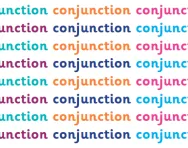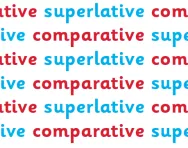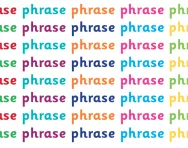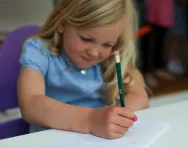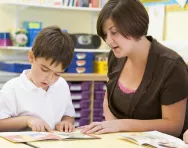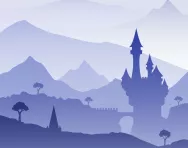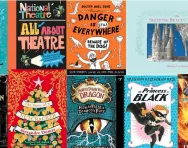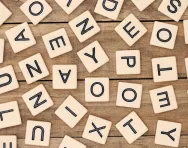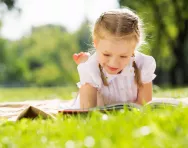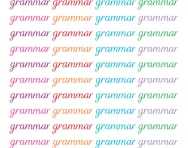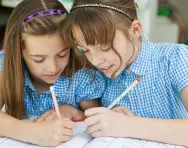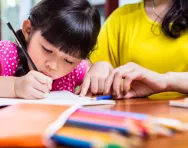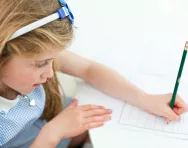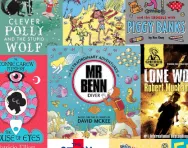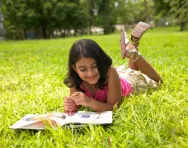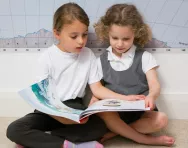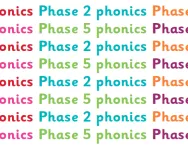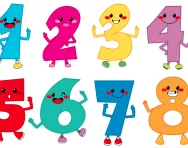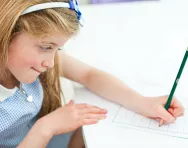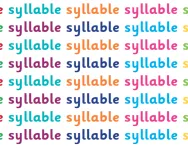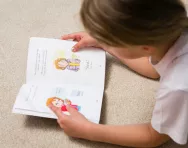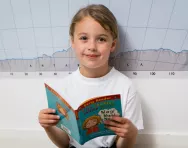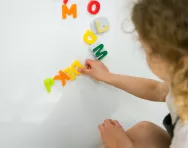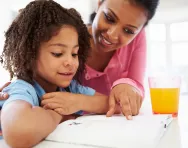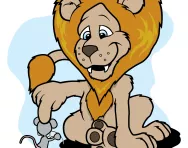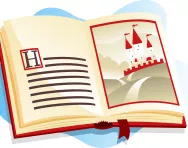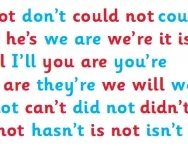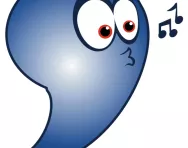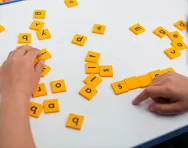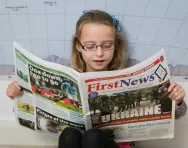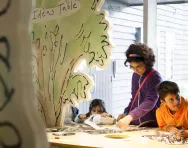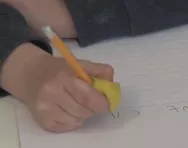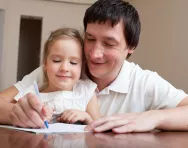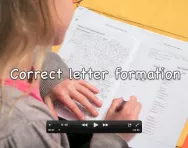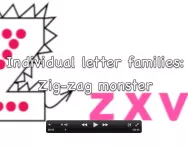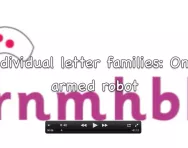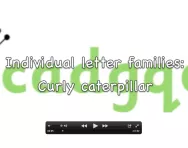What is a conjunction?
Conjunctions are joining words that link different parts of sentences. In our parents' guide we explain how children learn about conjunctions as part of the primary-school grammar curriculum.
What are comparatives and superlatives?
We use the comparative and superlative forms of adjectives and adverbs to compare things, people, actions and states in our writing. Find out how your child is introduced to this concept, how they will learn to form the comparative and superlative and how they will practise using them in the primary-school classroom.
What is a phrase?
A phrase is a small group of words within a clause. We explain how children are taught about clauses as part of the primary-school grammar curriculum and what you need to know to support their learning at home.
Early years writing
From learning to hold a pencil to getting their thoughts down on paper, learning to write is a tricky milestone for children. We explain how it happens, and how you can help.
Books or e-books: which are best for your child?
Reading purists may look down on e-books, but they could have some surprising benefits for your primary school child.
What is a free reader?
Every parent looks forward to their child graduating from reading scheme books, but how and when do they make the leap? We explain what a 'free reader' is and when your child is likely to graduate from reading schemes.
Teachers' tips for creative writing
How can children get to grips with creative writing? We asked teacher and author Jacqueline Harris for her insider advice.
16 of the best new books for children for Christmas 2015
Looking for the perfect books for your child to find under the tree? Whatever their interests or reading ability, there's a fantastic selection on offer this Christmas, from the latest Rick Riordan blockbuster to new classics, non-fiction treasures to pore over and laugh-out-loud funny reads. The holidays will be story-filled!
9 strategies for learning primary school spellings
If learning spellings always ends in tears and tantrums, trying another technique could help make it a less stressful process. We've rounded up the best methods to try.
Reading series: how they help your child
They might make you want to weep with boredom, but reading collections could have some big benefits for your newly-confident reader. We explain how they're written, why they appeal to kids and how to use them as a launching-pad for a lifetime of reading.
Grammar in primary school
From abstract nouns to verb tenses and the passive voice, your child will be taught lots of grammatical terminology and concepts during their time in primary school. Find out more about what they learn, when, and how grammar knowledge is tested in KS1 SATs and KS2 SATs.
6 ways to bring creative writing to life
Does your child’s writing lack a certain spark? We asked the experts for their top tips for injecting some colour into primary-school children's prose.
Creative writing prompts for kids
From pictures to music, using prompts can inspire your child to produce great writing. We look at the benefits of creative writing prompts, and how to use them.
Editing creative writing
Learning how to revise a piece of written work is an important skill for primary school children, and one that it’s never too soon to help them master.
How to encourage a reluctant writer
Are you longing for the day when your child produces a brilliant story all on their own? We look at some tried-and-tested techniques for getting unwilling writers to find their creative side.
14 of the best books for children for summer 2015
Make this the summer when your child journeys to ancient Rome, becomes a secret agent, takes to the high seas, finds out about England's past, solves a mystery and discovers the delights of Mr Benn... all without leaving the sofa! From kids' classics to brand-new adventures, we've got 14 brilliant books for your children to lose themselves in over the 2015 summer holiday.
Best maths story books for children
Introduce ratio, pie charts, probability and even simplifying fractions to children with these brilliant maths story books, picture-book presentations of mathematical concepts that primary-school children will love.
7 of the best early reader tools
From interactive games and apps to simplified reading books and learning-to-read devices, we love the early reader tools available to parents and children. Whether you want to motivate a reluctant reader or offer a huge selection of titles to a voracious bookworm, we've picked some of the best options to start your child on the road to a life-long love of reading.
Phonics phases explained
How does your child master phonics, from learning letter sounds to reading fluently? We explain the phases they may follow in the primary-school classroom.
Best counting books for children
Counting and sequencing numbers correctly is a big part of early maths. We've picked some brilliant mathematical story books to help support your child's learning at home with vibrant illustrations, memorable characters and great narratives.
Spelling in Year 2
A parents' overview of Year 2 spelling patterns, with examples of the words children are taught at the end of KS1 and Year 2 spelling worksheets to help them practise.
Year 1 spellings
Year 1 is a foundation year for spelling, with children being taught important spelling patterns and exception words as well as how split digraphs work. We explain how you can support your child's Y1 spelling learning at home with an understanding of the curriculum and practical worksheets and activities.
What is a syllable?
Syllables explained for parents, including details of how primary-school children are taught to identify syllables to help them with spelling and reading and understanding poetry.
The science of school reading schemes
Following a reading scheme at school can transform children from non-readers to bookworms in a surprisingly short space of time, but how are they developed and tested to help your child progress?
Common phonics problems sorted
Finding the thought of phonics daunting and wondering how you can support your child in learning to read when you're not really sure how they're being taught in the first place? Reception teacher Niki Jackson shares her phonics tips and advice for parents, highlighting some of the common phonics problems children experience and effective strategies to overcome them.
Teachers' tricks for phonics
Understand more about how children learn about sounds and try some of teacher Niki Jackson's practical tips to help your child with their early phonics learning at home. We particularly like the alphabet cookies suggestion...
How early readers can help your child love books
What do you do when your child is ready for more than school books, but not yet up to full novels? We explain how ‘early readers’ can fill the void. By Lucy Dimbylow.
What is a fable?
Fables tell us a story and teach us a lesson at the same time and we've been hearing them, retelling them and writing them for over two thousand years. We explain how primary-school children learn about fables and Aesop in our guide for parents.
What is a traditional tale?
Traditional tales like Cinderella, Little Red Riding Hood and Goldilocks play an important part in early literacy. We explain how these well-known stories are used to help develop reading comprehension and early writing skills, and explain how you can help your child's learning with fairy tales at home.
What are contracted words or contractions?
Contracted words or contractions are used every day in spoken and written English. Help your child keep them straight with our parents' guide, including complete listings of the common contractions children learn to spell in Year 2 and throughout Key Stage 2.
What is an apostrophe?
Children are first introduced to apostrophes in Year 2. Help them practise punctuating correctly at home with our simple revision tips, covering the use of apostrophes for possession and omission.
Best word games for children
Expand vocabulary, develop spelling skills, learn about homophones, anagrams and synonyms and compose huge numbers of silly sentences... all while having a great time. Whether your child is 3 or 13, our favourite word board games and literacy card games offer fast-paced fun for the whole family.
Best educational magazines for children
Looking for a fun- AND fact-packed publication for your child? The selection we've picked offer puzzles, original artwork, fiction, science projects to complete, history, hands-on making and more – and there isn't a plastic cover-mount in sight. Want to encourage your primary-school child to read regularly? Keep them supplied with new issues!
Museums reviewed by parents: Roald Dahl Museum and Story Centre
Make the most of family outings by choosing one of our parent-recommended museums. For fun, story-telling, literary inspiration and creative opportunities visit the Roald Dahl Museum and Story Centre.
Handwriting aids: pencil grips
Does your child struggle to hold their pencil correctly? Handwriting tutor Michelle van Rooyen explains how a pencil grip could help with their handwriting.
Handwriting aids: pens and pencils
With a return to greater emphasis on handwriting in primary schools, could a special pen or pencil help your child master the art of neat writing? Handwriting tutor Michelle van Rooyen explains what handwriting pencils and pens are available.
Video: Correct letter formation
Your child will be taught how to form the different letters of the alphabet differently, according to the ‘movement groups’ they fit into. Our explanatory video shows you how to form all letters (Long ladder, Curly caterpillar, One-armed robot and Z for Zig-zag monster) correctly, stroke by stroke.
Video: Letter formation, Zig-zag monster letter family
Help your child form each letter of the alphabet correctly with our step-by-step and stroke-by-stroke videos, with experts from the National Handwriting Association. In this video we look at the Zig-zag monster letter family: z, x, v, w, y and k.
Video: Letter formation, One-armed robot letter family
Help your child form each letter of the alphabet correctly with our step-by-step and stroke-by-stroke videos, with experts from the National Handwriting Association. In this video we look at the One-armed robot letter family: r, n, m, h, b, k and p.
Video: Letter formation, Curly caterpillar letter family
Help your child form each letter of the alphabet correctly with our step-by-step and stroke-by-stroke videos, with experts from the National Handwriting Association. Here we look at the Curly caterpillar family: c, a, d, g, q, o, e, s and f.
